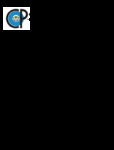| dc.description.abstract | El desarrollo de los sensores remotos por los países desarrollados, ha permitido generar imágenes satelitales de alta resolución, e instrumentos que proporcionan información precisa: cámaras digitales, espectrómetros, ceptómetros, sensores quánticos lineales, analizadores de dosel, entre otros; así como también equipo de cómputo de alta capacidad y potencia, programas de cómputo para digitalización y análisis de la información en tiempo real. Por lo tanto, el objetivo de esta investigación fue generar nuevas tecnologías que den mayor certidumbre y competitividad a la comercialización, mayor valor de la producción en los mercados futuros, valor de aseguramiento del cultivo y su producción, a través de generación de conocimiento e información en tiempo real a la agricultura protegida como a campo abierto de nuestro país, apoyados en la percepción remota y fotobiología. Con la finalidad de encontrar un procedimiento económico, rápido y confiable que estime el contenido de nitrógeno (N), se estableció un experimento en los invernaderos de la Universidad Autónoma Chapingo. La unidad experimental consistió de una planta de pimiento o fresa, según el caso, establecidas en sacos de cultivo de polietileno blanco calibre 600 de 100x30 cm a una distancia de 1.5 m entre hileras y 0.3 m entre plantas. Como sustrato se utilizó una mezcla de fibra de coco y tezontle rojo, 50/50 (v/v). Se emplearon soluciones nutritivas con cuatro niveles de N: 0, 4, 12 y 20 molc m-3 (en el último tratamiento 4 molc m-3 corresponden a NH4+), a partir de la solución Steiner. El diseño experimental fue completamente al azar con cuatro repeticiones. En fructificación, en cada unidad experimental, se seleccionaron 10-15 hojas y en éstas se medió la reflectancia con un radiómetro y posteriormente se digitalizaron mediante un escáner. Posteriormente, con el programa de cómputo VISUAL BASIC, cada imagen se separó en sus colores primarios (bandas azul, verde y rojo) y se obtuvieron dimensiones CIELAB L*, a* y b*, pureza del color (croma) y ángulo de tono (matiz). En laboratorio se determinó la concentración de N mediante el método microkjeldahl. Las concentraciones de N en las hojas se relacionaron con las reflectancias obtenidas con el radiómetro y las imágenes de escáner en las bandas azul, verde y roja, y sus dimensiones CIELAB L*, a* y b*, pureza del color (croma) y ángulo de tono (matiz) mediante el programa estadístico Statistical Analysis System (SAS, 2003). _______________ RERLECTANCE IN PEPPER AND STRAWBERRY LEAVES FOR DIAGNOSIS NUTRIMENTAL. ABSTRACT: The development of remote sensing by developed countries, has generated high resolution satellite images, and tools that provide accurate information: digital cameras, spectrometers, ceptometer, quantum sensors linear canopy analyzers, among others, as well as powerful computing devices, software for the digitization and analysis of real time information. Thus, the objective of this research was to generate new technologies that help to provide greater certainty and marketing competitiveness, greater production value in the futures markets, crop insurance value and production, through generation of knowledge and information in real-time for protected and in field agriculture, supported by remote sensing and photobiology.
In order to find an economical, fast and reliable to estimate for nitrogen (N), an experiment was established in the greenhouses of Chapingo. The experimental unit consisted of one pepper or strawberry plant, established in white polyethylene bags caliber 600 of 100x30 cm at a distance of 1.5 m between rows and 0.3 m between plants. As substrate we used a mixture of coconut fiber and red tezontle, 50/50 (v / v). Nutrient solutions were used with four levels of N: 0, 4, 12 and 20 molc m-3 (in the last treatment 4 molc m-3 corresponded to NH4 +) from the Steiner solution. The experimental design was completely randomized with four replications. In fruiting in each experimental unit, we selected six blades and reflectancy was measured and then scanned. Later, with the VISUAL BASIC computer program, each image was separated into its primary colors (blue, green and red bands) and gave dimensions CIELAB L *, a * b * color purity (chroma) and hue angle (hue). In laboratory N concentration was determined by the method of microkjeldahl. Concentrations of N in the leaves were related to reflectances obtained with the radiometer and scan images in the bands blue, green and red, and its dimensions CIELAB L *, a * b * color purity (chroma) and angle tone (hue) using the statistical program Statistical Analysis System (SAS, 2003). | en_US |


